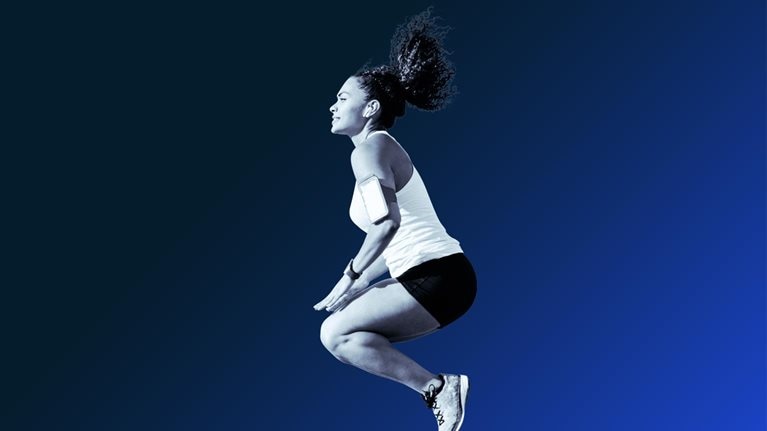In many ways, the sporting-goods industry is in a fortunate position. Compared with many other industries, the past two years have, in aggregate, been characterized by solid growth, equaling or outperforming prepandemic levels. Looking ahead, in the medium term, there are reasons for optimism that are especially driven by an increasing awareness of health, fitness, and sports.1
In the short term, however, there could be clouds on the horizon. Rising costs, the potential threat of a larger recession, and continuing operational challenges might create headwinds in early 2023, putting companies under urgent pressure to embed resilience into their operations. That will likely mean going beyond raising prices to boost productivity, managing cash more rigorously, and finding the right balance between saving and investment.
Review of 2022
2022 was set to be another great year for the sporting-goods industry: consumer sentiment was improving month over month, reflecting looser COVID-19 restrictions in most markets; companies were placing large orders, both in anticipation of demand and to avoid the supply chain challenges of 2021; and performance in the first half of the year was widely positive. In the background, however, challenges were accruing. Inflation was picking up due to the effects of the war in Ukraine (especially in Europe), and higher raw material and energy costs were prompting some companies to raise prices. Meanwhile, consumer sentiment showed signs of decreasing optimism, and discretionary spending declined. Supply chains gradually became more reliable, but the sudden increase in available products, paired with declines in spending, led to widespread overstocking.
In the second half of the year, the economic outlook took a downturn amid rising concern over geopolitical instability and the trajectory of interest rates—which tightened constraints on both companies and household budgets. The aggregate impact of these factors was a significant weakening in industry performance compared with 2021 (although still in advance of prepandemic levels). Sporting-goods companies were able to raise prices, but not enough to offset declines in units sold. That said, some categories performed better than others, leading to both risks and opportunities for individual players.
I believe it will take some time for demand and supply to right themselves, especially as I suspect the economic conditions may well continue to worsen as we go into 2023, with impacts on consumer confidence.
Navigating the recessionary wave
With inflation in 2022 reaching its highest level in at least 40 years in Europe and the United States, just 6 percent of sporting-goods companies are confident about their resilience and performance.2 Indeed, the three words that executives used most frequently to describe expected conditions in the industry in 2023 were “challenging,” “uncertain,” and “unpredictable.”3 The biggest concerns in the second half of 2022 have been falling demand and excess inventory. Looking to the coming year, 22 percent of decision makers expect both revenues and margins to contract by more than 5 percent.
Consumer sentiment is falling, driven by factors including the war in Ukraine, higher energy prices, and rising interest rate increases, which have reduced household incomes and put pressure on discretionary spending (Exhibit 1).

Net intent to purchase in footwear, apparel, and the sports and outdoors category has continuously fallen over the course of 2022. Furthermore, consumers are likely to reduce their sporting-goods spending over the coming period. More than 50 percent of consumers say they will buy fewer items, while about 20 percent say they will trade down to less expensive brands.4
The expectation for an upcoming dip is reinforced by recent demand dynamics, which saw peaks in 2021 and the first half of 2022 (with many purchases supported by economic stimulus). After an exceptional performance during the pandemic, durable goods for individual private use, such as sports equipment, are likely to be most affected. Pressure on performance is expected to be unavoidable.
How should the industry respond?
Overall, sporting-goods companies need to develop strategies that will help them navigate current challenges. And raising prices may not be the solution in the context of reduced demand—especially given the wide availability of more affordable options. In an inflationary context, a holistic approach considers six key action areas:
- Implementing smart pricing and channel management. Data and analytics, for example relating to price elasticity and competitor offerings, can inform flexible pricing strategies and revenue management to protect net margins and limit the impact of volatility. Effective implementation can lead to a 5 to 15 percent revenue boost.
- Resetting return on investment. Decision makers should consider conducting a top-down review of efficiency by channel and SKU to invest for growth. Our analysis indicates this could lead to a 10 to 20 percent saving in marketing budgets and enhanced return on investment.
- Strengthening brand communications. Communications could be optimized and refocused on the brand’s core value proposition, which could help companies achieve a 2 to 5 percent revenue uplift.
- Building supply chain resilience. Reviewing sourcing and supply chains and applying next-generation levers to the cost base could achieve 5 to 10 percent of possible savings.
- Fostering next-generation organization productivity. An agile approach and innovations such as robotic process automation can lead to longer-term savings of 5 to 10 percent. Companies could review warehousing and transportation costs to unlock productivity levers—recovering transportation costs as the market slows—and review facilities’ networks.
- Optimizing finance. Companies could focus on freeing up cash and exploring divestments and acquisitions.
Through these commercial, operational, and financial levers, companies can get a grip on recessionary impacts, shape their business model to current needs, and position for a speedy return to growth. The key for decision makers will be to manage these priorities based on their unique circumstances while embracing a positive lens that builds longer-term competitive advantage.
Industry performance: Country deep dives
In this year's report, we deep dive specifically into the two key sporting goods markets.
United States: Data from the NPD Group and insights from its senior industry adviser Matt Powell show a strong postpandemic recovery in 2021 by the US sporting-goods market that surpassed 2019 performance in many categories. In 2022, the US market was exposed to the many forces shaping the global market, leading to unit sales declines of 4 to 8 percent in the first nine months, compared with 2021 levels, which was not offset by higher average selling prices. These unforeseen volume declines led to significant overstocking and heavy discounting in the second half. Athletic footwear and activewear saw revenue declines of 4 to 6 percent in the first nine months of 2022, driven by weakening consumer demand and conservative assortments. Equipment categories had a hard time beating their record years of 2020 and 2021. Home fitness equipment saw a 28 percent revenue decline compared with the same period in 2021. The exception was e-bikes, which continued to grow strongly (Exhibit 2).

China: In 2022, the Chinese sporting-goods market saw a largely flat performance, in stark contrast to double-digit expansion over recent years. The key driver was the country’s zero-COVID policy. However, in the longer term, factors such as the expansion of the middle class (Exhibit 3) and rising demand from women (unlike in Europe and the Americas, women in China spend 15 to 20 percent more on sports and fitness than men) may promise a return to growth. In general, sports are becoming a more significant part of people’s daily lives, and there is increasing interest in more niche sports, such as skiing and surfing, and outdoor activities, such as camping. Local brands such as Anta and Li-Ning are competing fiercely—for example, by offering more women-focused products—and are capturing market share. Thus, there is rising pressure on international brands to raise their game.

Sporting-goods trends for 2023
In 2023, four themes could feature high on company agendas (Exhibit 4).

Brand relevance increasing. Building brand heat and loyalty is more relevant than ever, especially in a recessionary context, where consumers tend to rely on trusted brands. The consumer journey is shifting, especially when shopping for lifestyle categories. Whereas previously, consumers were motivated first by factors such as functionality, design, and price, they are now increasingly driven by brand. Notably, the industry’s high performers in terms of value creation are characterized by high levels of brand equity and loyalty. In the lifestyle apparel category, sporting-goods companies are on a similar journey as fashion companies, involving a need to build strong and trusted brands that leverage the direct-to-consumer revolution, collaboration with other brands, and community marketing.
Consumers’ ability to influence and push brands is stronger than ever.
Sustainability: time to deliver on promises. Brands, retailers, and manufacturers have made bold promises of a more sustainable future, but are they up to the challenge? With self-imposed deadlines on the horizon, it is time to deliver. Two priorities could shape their agendas:
- plotting the path to net zero by setting CO2 baselines, defining emissions abatement curves, prioritizing decarbonization levers, and planning for the challenges ahead
- defining the company’s role in the growing circular economy, choosing from a range of business models to scale
In an environment where both regulators and consumers are targeting greenwashing, companies should carefully consider how they deliver on their actions and ambitions (Exhibit 5).

It starts with the design and raw material selection. The next stage is how we build the product. We need to develop products that are easy to recycle, and we need the brands to collaborate and drive this.
Nearshoring: a potential solution for supply chain disruptions. Supply chain disruptions, higher trade barriers, and geopolitical turmoil are putting pressure on supply chain security and leading to higher costs.
Nearshoring can unlock a range of benefits in a disruptive context: control and derisking of the supply chain, agility and speed, cost structure competitiveness, protection against trade barriers, and a more sustainable operating model in the eyes of consumers.
Still, nearshoring does not always go according to plan, evidenced by the fact that some companies have recently reversed nearshoring decisions.
Whether to nearshore or not should be decided at a product level, assessing exposure to supply chain shocks, the need for shorter lead times, and the economics. It is important that the nearshore country meets the requirements for raw materials and components and offers the right capabilities and capacity. A detailed business case should take into account a holistic set of variables to determine financial impact and feasibility, as well as potential government incentives.
I believe you need to start with a merchandising and assortment plan. Which portion of my assortment is predicated on speed, cost premium, and full-price sell-through? Which part is instead based more on scale and volume, which I prefer to source from the global network?
Sporting-goods industry: a hot target for private investors. The sporting-goods industry has grown strongly over the recent years and is likely to continue on that path, amid rising consumer health awareness and deepening interest in outdoor lifestyles and athleisure apparel. In addition, the industry has proven to be more resilient in downturns, bouncing back faster than others. Furthermore, it comprises many smaller but well-differentiated brands, which make attractive targets for consolidation or growth plays. These factors have fueled interest among private investors, including venture capital firms, private equity funds, and companies, with the number of annual deals doubling in the past decade. Focus areas have included outdoor categories, connected fitness equipment, athleisure and activewear, and sustainable sportswear (Exhibit 6).

In a market dominated by high performers, private investment is challenging. Our analysis reveals three key priorities for investors: aspire to build a portfolio to drive synergies; elevate digital, focusing on communities and personalization; and leverage analytics at scale to harness the power of data.
I think there are different business models that you can employ in how you create value. In our brand division, we create value by buying brands and then adding them to our platform.
Download Sporting goods 2023: The need for resilience in a world in disarray, the full report on which this article is based (PDF–11.8MB).

